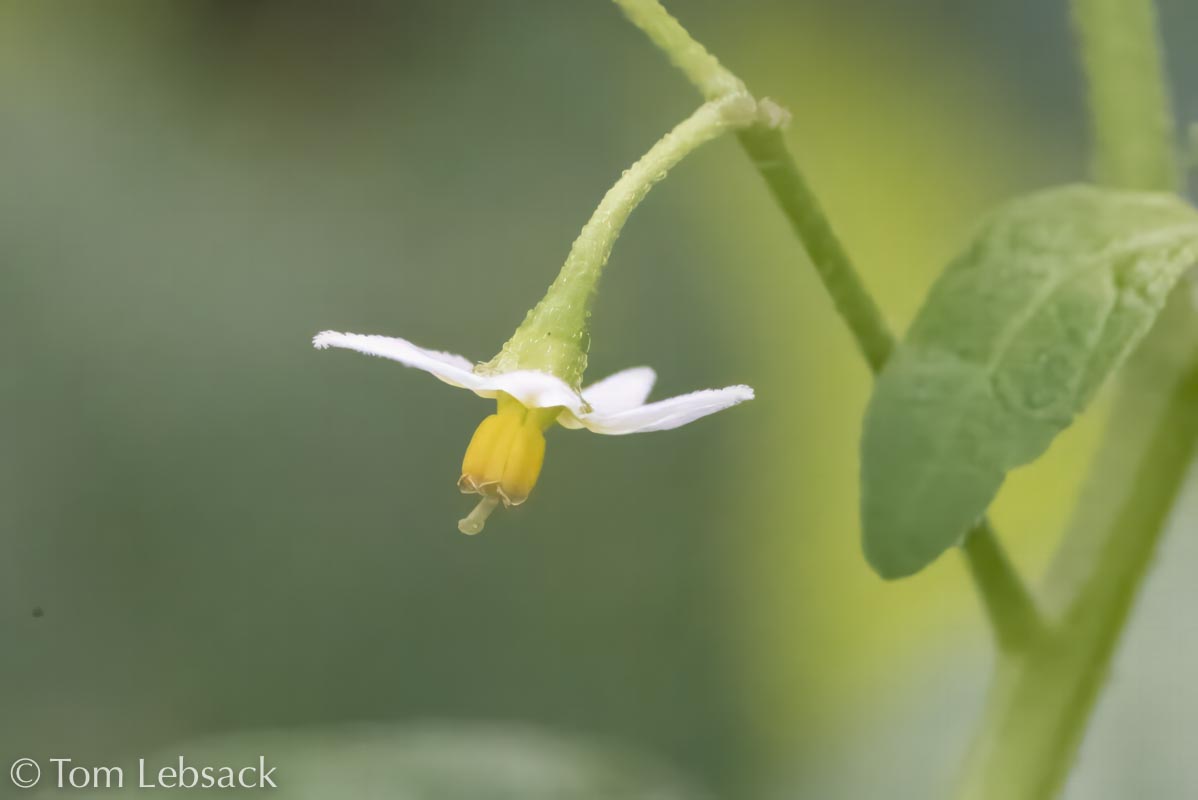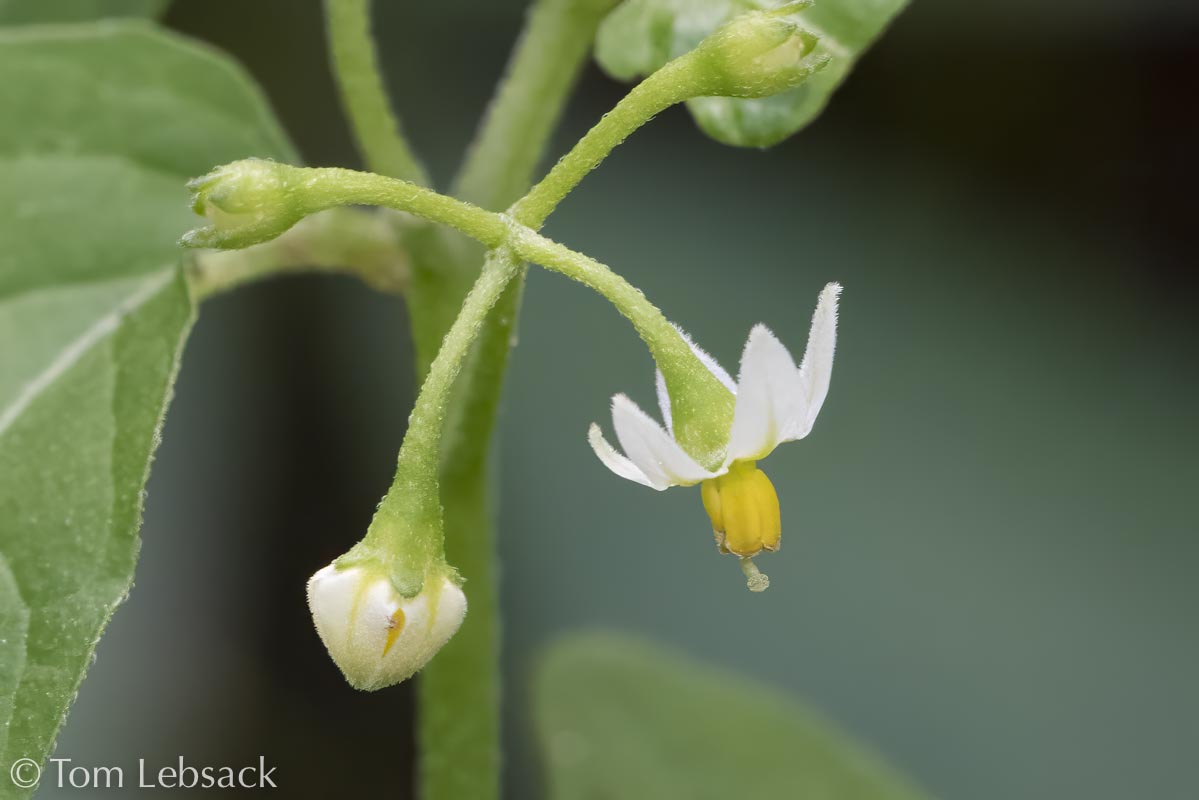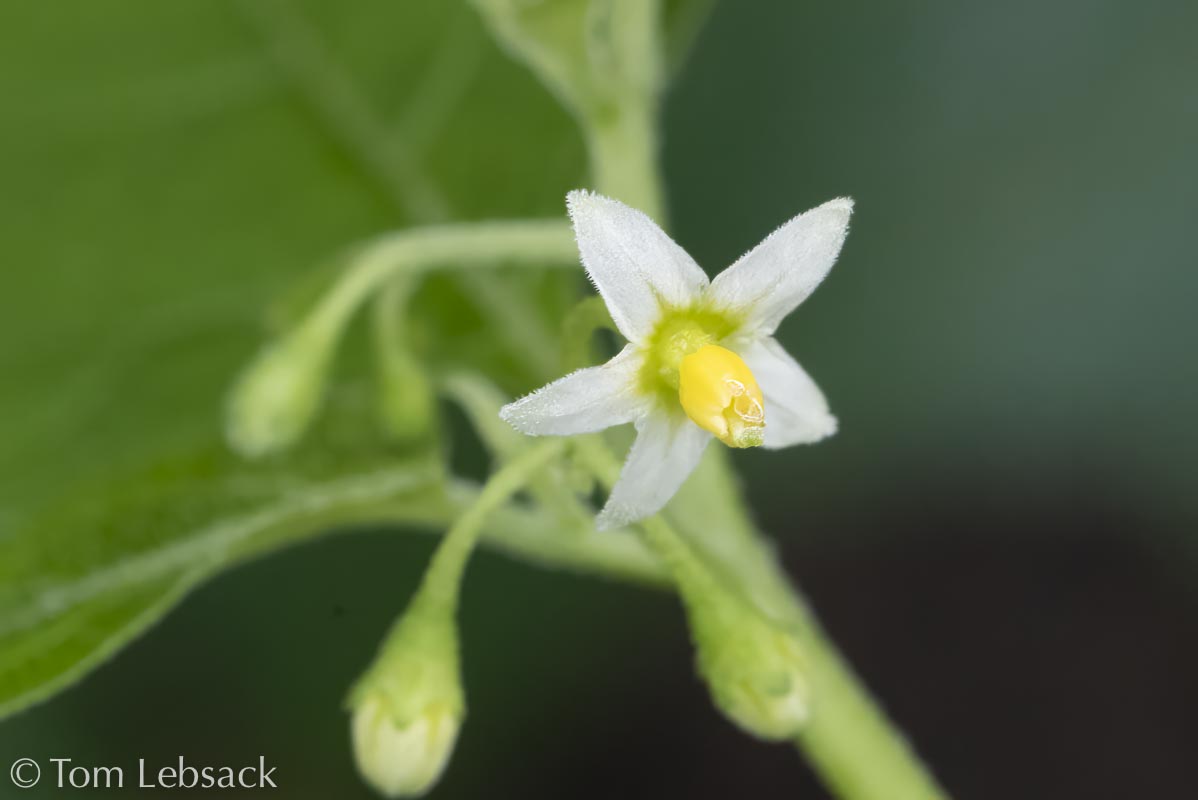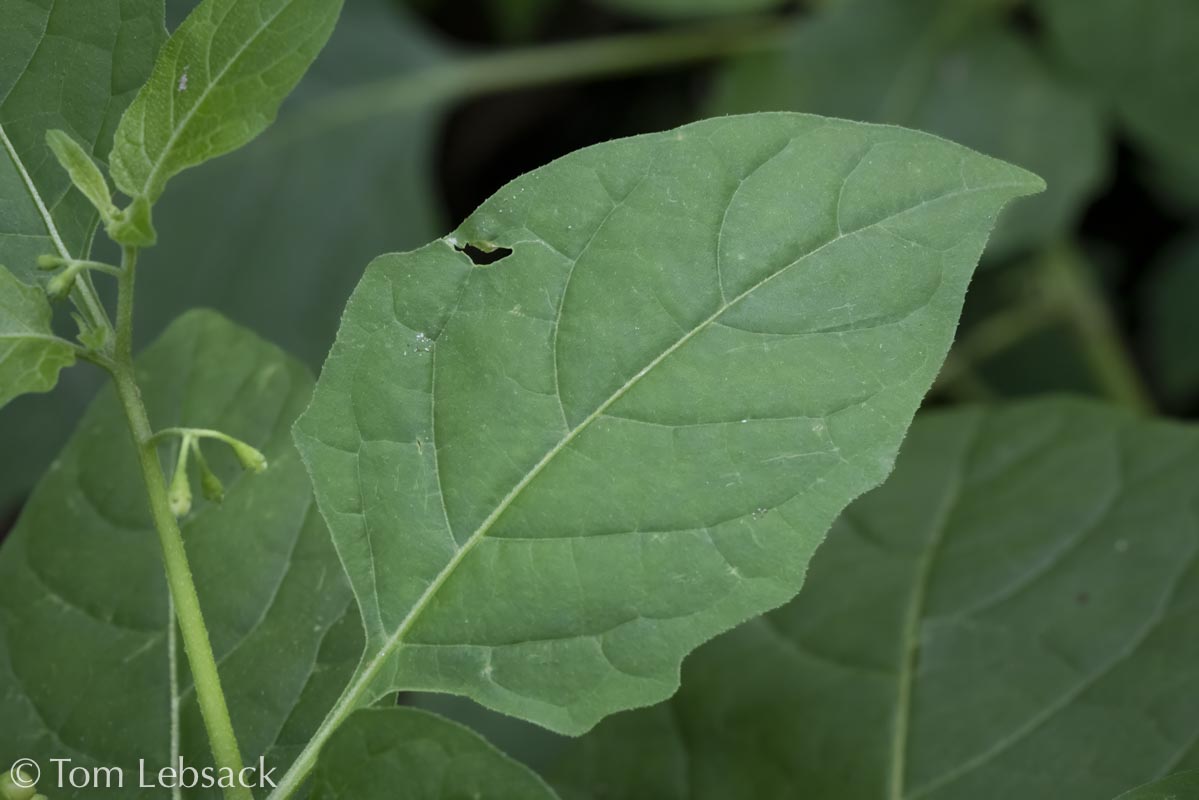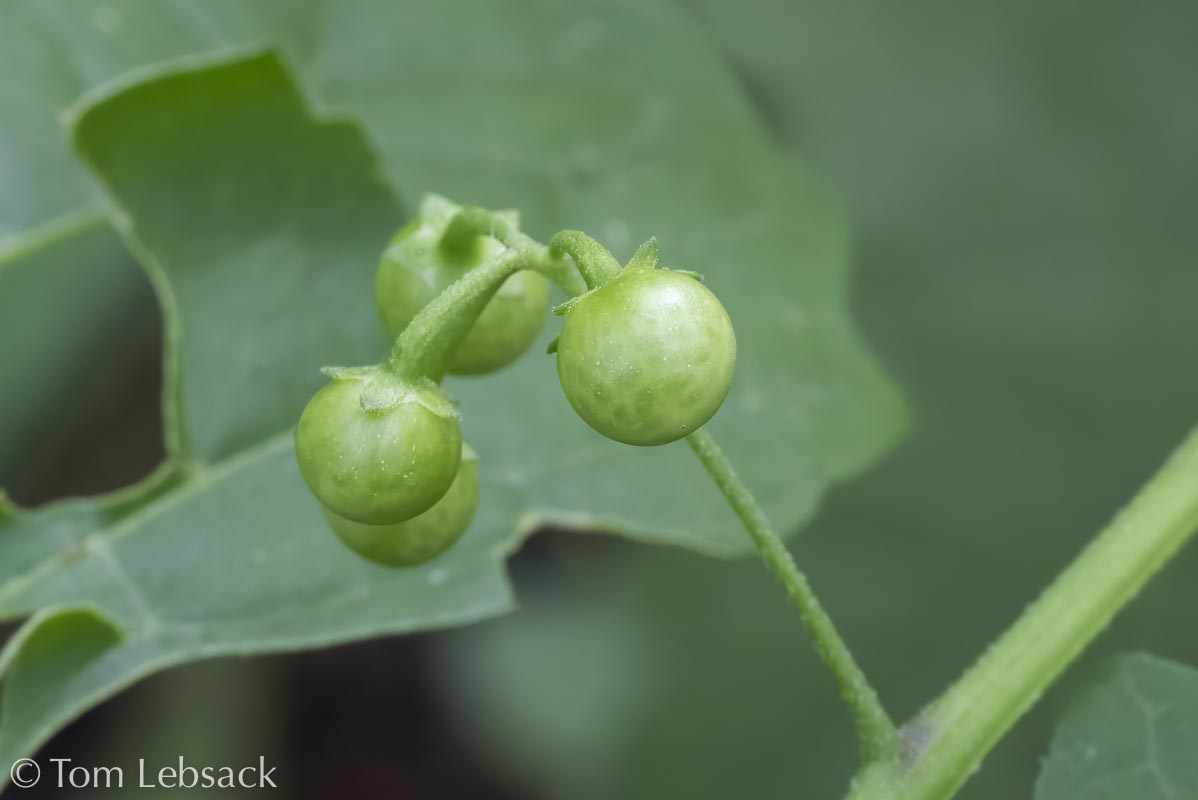Solanum ptychanthum
(West Indian Nightshade )
| Scientific Name | Solanum ptychanthum | USDA PLANTS Symbol | SOPT7 |
| Common Name | West Indian Nightshade, Eastern Black Nightshade | ITIS Taxonomic Serial No. | 505270 |
| Family | Solanaceae (Nightshade) | SEINet Reference |
Click Here |
| Description | Habitat: Various types of moist to seasonally wet (mesic) soils in thickets, woodland openings, streambanks, fields, pastures, fencerows and disturbed areas. Plant: Erect annual plant 1 to 3 ft. tall; smooth stems branching frequently above. Leaves: Alternate , broadly lanceolate, ovate, oval, or oval-deltate, 1 to 3 inches long and up to 2 inches wide; edges are smooth, undulate, or bluntly dentate, tips are acute. Inflorescence: Small clusters (umbels) of small, drooping flowers arising from leaf axils; star-shaped flowers are up to 1/2-inch across with 5 (usually) white, spreading or curled petals, typically green at the base; 5 yellow stamens surrounding a green style just visible at the tip of the column; calyx below with 5 triangular lobes. Bloom Period: April to November. Fruit: Round berries 1/4 to 1/3-inch in diameter ripening to shiny black. References: "Wildflowers of Texas" by Michael Eason, Illinois Wildflowers and Minnesota Wildflowers. |
BONAP Distribution Map Map Color Key Map Color Key |
Texas Status: Native |
Banner photo of Castilleja indivisa and Lupinus ssp. taken along FM 1323 north of Johnson City, Blanco County
© Tom Lebsack 2024
